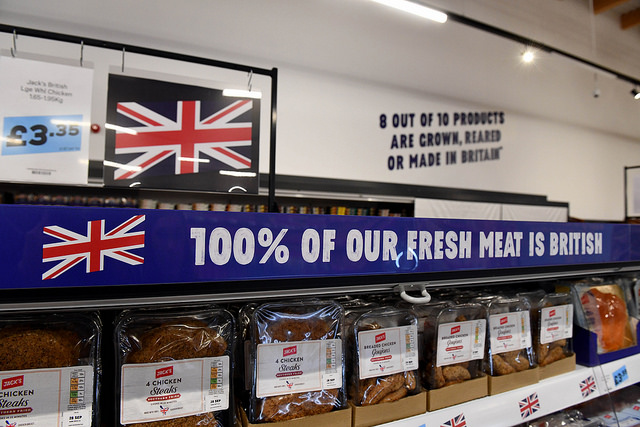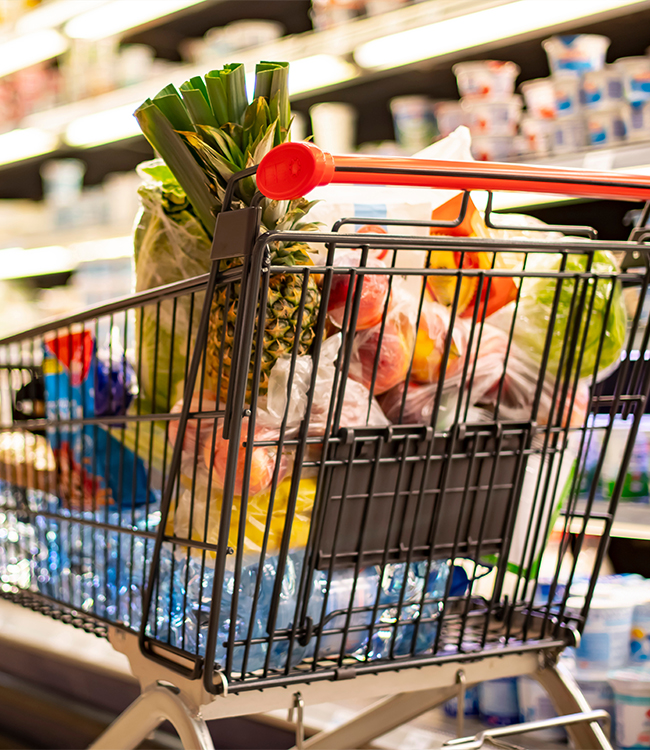The future of grocery retailing: we answer your questions!
Following Mintel’s London Bitesize Briefing on the changing face of grocery retailing, Nick Carroll, Senior Retail Analyst, and Jack Duckett, Senior Consumer Lifestyles Analyst, answer a selection of questions posed by the audience.
How do categories that traditionally struggle online such as groceries and red meat overcome the consumer need to see and feel the product?
Nick Carroll: Our research confirms that there is some reluctance from grocery shoppers to buy certain categories online – stemming from a lack of personal decision making in the final choice of fresh products. Most of the leading players have looked to offset this hesitancy with freshness guarantees but as much of the sector still uses store-based picking there will be instances where the product, or indeed substitutions, will fall short of the standards that consumers may have in-store. However, I also feel the reluctance to buy fresh online is over-emphasised, or perhaps has shifted in recent years. Our research shows that two-thirds of online grocery shoppers say fresh products are typically present in their online grocery order – and indeed younger shoppers (16-34s) tend to have more fresh products in their baskets. So this may hint that this reluctance is reduced among the younger group, and that moving forward as consumers become more comfortable or familiar with shopping online for groceries this is only likely to improve.
Given the desire for British-only brands and shops, what does this mean for other products? How do they stay relevant to both retailers and shoppers?
Jack Duckett: As Nick commented in his presentation- it’s really interesting to see the huge consumer interest in British provenance, but no one has quite twigged here how restrictive that would be. When people talk about their love of British produce, so much of its reflects their belief that British is better, both in terms of quality and manufacturing process. As such, there is a case to be made for brands centred on importing products to highlight how they both meet or even exceed people’s high standards. This is something that the Fairtrade certification offers to retailers and shoppers.
I would also suggest that people feel that they understand British produce – we know what farms looks like in the UK, we see them as children and on our jaunts into the countryside – and there is a sense that this familiarity breeds trust. Against that, imported produce is often lumped together under the simplistic “non-British” banner. As such, campaigns that centre on familiarising us with the processes and farmers from abroad could really help to bolster trust and interest. This is something the Co-op has long been associated with, with its ‘Meet the Producer’ initiative.

What are consumers and retailers thinking about ethical labels?
Jack Duckett: According to Mintel’s report on ethical lifestyles, over a quarter of adults consider whether a product has been made by a company with fair trade practices when shopping. Ethical labels have long been a really helpful way for shoppers to understand quickly if a product meets a certain ethical standard.
However, people’s definition of what it means to be ethical has broadened and I think it has made it harder for people to establish exactly how different labels define ethical behaviour. Moreover, there has been a number of new ethical labels entering the market, making the landscape even more complex. For instance, the Mondelēz-owned confectionery brand Green & Black’s announced in August 2017 that it would be launching its first chocolate bar using its own ‘Cocoa Life’ certification, and Sainsbury’s has set up its own fair trade certification for its own-label teabags. And, there have also been rumours in trade publications that Tesco is mulling a similar move for its coffee products.
From the consumer’s perspective, the introduction of a wider repertoire of ethical certifications also runs the risk of being confusing. In the worst-case scenario, this could result in consumers simply ignoring these logos when shopping as they do not understand what different retailer schemes mean.

The trade off for shoppers using payment systems like Amazon Go is allowing retailers access to their shopping habits & data. Do you think shoppers are ok with that? Are they happy to sacrifice data to gain convenience?
Nick Carroll: Consumers are always wary about who has access to their personal data and how it is being used. However, I also think that if a retailer/brand can show that having access to this data brings a benefit to the customer, then people tend to be more flexible. Indeed, our research on attitudes toward data sharing shows that retailers, be them online or store-based, are the types of brands that consumers are most willing to give over their personal data in exchange for an incentive. Traditional ‘loyalty’ schemes have long traded on this premise, and the digitalisation of such schemes can actually allow retailers to offer far more personalised offers and incentives. Indeed, if this can be expanded out further to give customers full access to their data to create healthy eating plans or savings plan then again this is a great way of both the retailer collecting valuable data, but also giving back some of this value to the customer.
You talked about shoppers becoming more savvy, increasingly using apps, and moving to technological solutions in the future. How do you think these things will affect the older demographic?
Jack Duckett: The older demographic is a really broad group and we have to be careful about which parts of it we are referring to. If we group all over-55s, then we are looking at very different tech habits and capabilities. Data for Mintel’s Digital Quarterly Trends: Online Reviews 2018 report shows that 75% of 55-64s own a smartphone while 62% of all over-65s own a smartphone. This shows quite a difference in tech capabilities in just a 10 year age gap. And I would argue that while both lower than the UK average, neither are low enough for us to suggest that tech advancements are completely out of reach of this group.
Of course, the proportion of non-tech users grows amongst the very elderly and there is a risk that a complete shift to digital would risk excluding this group. But I think retailers are very aware of this, and while they are keenly rolling out digital innovations, most are not making any suggestion of doing away with the physical in-store solutions they offer – be that recipe cards, in-store special promotions or physical loyalty cards. In order to meet everyone’s needs, both digital and physical innovations will be required for the foreseeable future.
Nick Carroll: I agree entirely with Jack’s assessment. If you look at the continued ‘hot topic’ that is self-service checkouts, there are a number of retailers in the convenience sector who initially thought these would have a place in every store. However, they quickly found that whilst in urban and high-footfall locations they worked as intended, in more rural areas (where the average age may be higher) they actually worked to undermine what many liked about the store experience – the human interaction with staff for customers whose visit was part of their routine. This really speaks to Jack’s point about not throwing out the traditional for the sake of it: tech integration into stores should only ever enhance the shopping experience, not diminish it.
How important is the in store experience to customer when shopping?
Nick Carroll: The fact that even by 2022 we estimate around 90% of sales in the sector will still come in-store should tell you how important stores, and by association the in-store experience is, to shoppers. Equally perhaps because of the lesser share online takes in the grocery sector, grocery stores lag other sectors (notably clothing) in terms of in-store theatre. Groceries (particularly fresh) can lend themselves very well to visual merchandising, but much of the sector is still uninspiring in this regard. Not all stores have to, or should, look like Whole Foods of course, but certainly more could be done to excite customers. Indeed, shoppers are also craving expertise and education in-store and again many stores lack in this regard. Equally as Jack touches upon below, there are a myriad of areas that amount to creating a great in-store experience, and this is something that retailers should want to promote – because away from own-brand, the store environment is the main way retailers can promote their individuality from rivals, and indeed online.
Jack Duckett: From a lifestyles perspective, I would argue that there is an ever-growing appetite for more experiences amongst consumers. We see this in so many areas whether that be the demand for in-store beauty tutorials in chemists and department stores, or for gym classes outside the ordinary. In the grocery market there is scope to replicate some of the exciting in-store experiences we see in other retail sectors – gym classes or even cooking lessons.
But, for retailers not keen to (or capable of) going to these extremes – improving the customer experience could be down to improving the way staff interact with customers, or making it easier to navigate the store. While these are smaller less headline-grabbing changes, they are still ways that retailers can make shopping in-store more enjoyable.

Associate Director – Retail, Nicholas Carroll has a particular flare for the grocery industry but analyses and writes in-depth reports on a range of UK and European retail markets.
-
Discover your next big breakthroughGet smart fast with our exclusive market research reports, delivering the latest data, innovation, trends and strategic recommendations....View Reports
-
2026 Global PredictionsOur Predictions go beyond traditional trend analysis. Download to get the predictive intelligence and strategic framework to shape the future of your industry in 2026 and beyond. ...Download now
-
Are you after more tailored solutions to help drive Consumer Demand, Market Expansion or Innovation Strategy?Ask for a customised strategic solution from Mintel Consulting today....Find out more

































